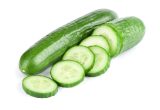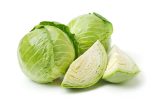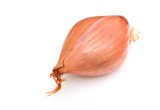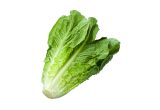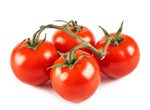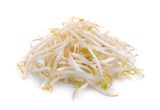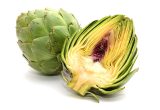Lettuce

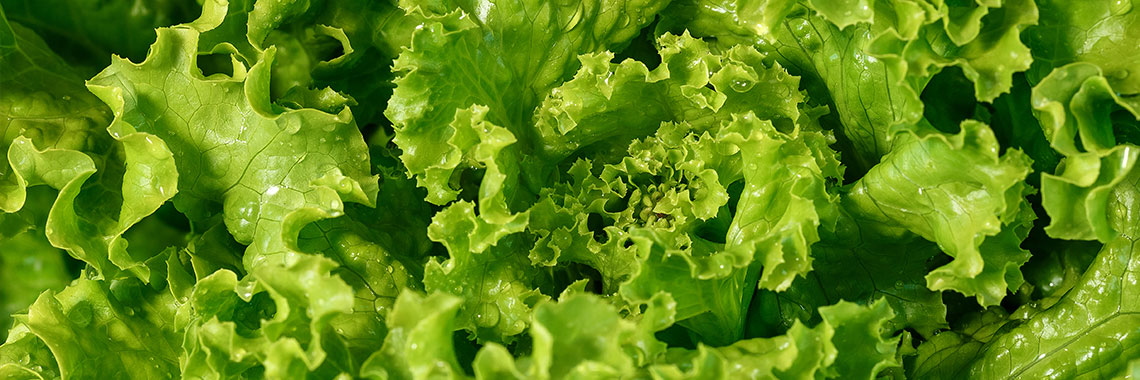
Description
- Lettuce (Lactuca sativa) belongs to the Asteraceae family.
- Probably originating from the Mediterranean basin, lettuce was already highly appreciated by the Egyptians, Greeks and Romans six centuries before our era (Blancard, 2003)
PHYSICAL AND ORGANOLEPTIC CHARACTERISTICS
- Lettuce has a wide range of colours, from green to red, attributed to chlorophyll, carotenoid and anthocyanin pigments.
- β-carotene and lutein are generally the major carotenoids in lettuce, but wide variations exist among varieties and types (Kim, 2016; Neto, 2017).
- Red lettuces are also reported to be fairly rich in lutein, violaxanthin and lactucaxanthin (Kim, 2018).
- Unlike red or red/green, green lettuces do not contain cyanidin (anthocyanin) (Kim, 2018).
- When a lettuce is cut, a browning reaction occurs in the cut tissue associated with the appearance of yellow-brown pigments. This reaction is usually attributed to the oxidation of polyphenols by the enzyme polyphenol oxidase (PPO), but it seems that sesquiterpene compounds, and more specifically lettucenins, are also involved in this reaction (Mai, 2014).
- The slightly bitter taste of lettuce is thought to be conferred to sesquiterpene lactones, predominantly 8-deoxylactucin-15-sulfate, while glucose is thought to be the sugar most strongly correlated with sweetness perception (Chadwick, 2016).
COMPOSITION CHARACTERISTICS (excluding macronutrients, vitamins and minerals)
- Pigments present in lettuces have health benefits (Neto, 2017):
- Anthocyanins due to their antioxidant properties have effects on hypertension, vision disorders, microbial infections and cancer cell proliferation;
- Chlorophyll has anticarcinogenic and detoxifying effects;
- Carotenoids have antioxidant properties and have protective effects on the immune system. They also protect chlorophyll pigments from photo-oxidation under excessive light.
- Rich in fibre, iron, folate (vitamin B9), vitamin C and bioactive compounds, lettuce is said to have anti-inflammatory, cholesterol-lowering and anti-diabetic activities. Among the bioactive compounds, phenolic acids (caffeic acid, chlorogenic acid) and flavonoids (quercetin, kaempferol, anthocyanins and luteolin flavones) have been identified (Kim, 2016).
- The content of bioactive compounds in lettuce varies among cultivars (Kim, 2016).
However, phenolic compounds are common to lettuce cultivars: caffeic acid derivatives, including chicoric, chlorogenic, caffeoyltartaric and caffeoylmalic acids; and flavonol glycosides, mainly quercetin 3-O-malonylglucoside, quercetin 3-O-glucoside and quercetin 3-O-glucuronide (Gurdon, 2019).
- Lettuce (Lactuca sativa) belongs to the Asteraceae family.
- Probably originating from the Mediterranean basin, lettuce was already highly appreciated by the Egyptians, Greeks and Romans six centuries before our era (Blancard, 2003)
PHYSICAL AND ORGANOLEPTIC CHARACTERISTICS
- Lettuce has a wide range of colours, from green to red, attributed to chlorophyll, carotenoid and anthocyanin pigments.
- β-carotene and lutein are generally the major carotenoids in lettuce, but wide variations exist among varieties and types (Kim, 2016; Neto, 2017).
- Red lettuces are also reported to be fairly rich in lutein, violaxanthin and lactucaxanthin (Kim, 2018).
- Unlike red or red/green, green lettuces do not contain cyanidin (anthocyanin) (Kim, 2018).
- When a lettuce is cut, a browning reaction occurs in the cut tissue associated with the appearance of yellow-brown pigments. This reaction is usually attributed to the oxidation of polyphenols by the enzyme polyphenol oxidase (PPO), but it seems that sesquiterpene compounds, and more specifically lettucenins, are also involved in this reaction (Mai, 2014).
- The slightly bitter taste of lettuce is thought to be conferred to sesquiterpene lactones, predominantly 8-deoxylactucin-15-sulfate, while glucose is thought to be the sugar most strongly correlated with sweetness perception (Chadwick, 2016).
COMPOSITION CHARACTERISTICS (excluding macronutrients, vitamins and minerals)
- Pigments present in lettuces have health benefits (Neto, 2017):
- Anthocyanins due to their antioxidant properties have effects on hypertension, vision disorders, microbial infections and cancer cell proliferation;
- Chlorophyll has anticarcinogenic and detoxifying effects;
- Carotenoids have antioxidant properties and have protective effects on the immune system. They also protect chlorophyll pigments from photo-oxidation under excessive light.
- Rich in fibre, iron, folate (vitamin B9), vitamin C and bioactive compounds, lettuce is said to have anti-inflammatory, cholesterol-lowering and anti-diabetic activities. Among the bioactive compounds, phenolic acids (caffeic acid, chlorogenic acid) and flavonoids (quercetin, kaempferol, anthocyanins and luteolin flavones) have been identified (Kim, 2016).
- The content of bioactive compounds in lettuce varies among cultivars (Kim, 2016).
- However, phenolic compounds are common to lettuce cultivars: caffeic acid derivatives, including chicoric, chlorogenic, caffeoyltartaric and caffeoylmalic acids; and flavonol glycosides, mainly quercetin 3-O-malonylglucoside, quercetin 3-O-glucoside and quercetin 3-O-glucuronide (Gurdon, 2019).
RAW
The following values are approximate and depend on variety, season, ripeness, cultivation conditions, etc. Raw lettuce is low in energy*. On average it provides 14.70 kcal (calories) per 100 g, i.e. 61.70 kJ.
COMPOSITION TABLES
For each nutrient, the tables provide information on the content, the minimum and maximum values, as well as the percentage of the Dietary Reference Values (DRVs) for 100 g net of raw lettuce.
* Regulation (EC) No 1924/2006 of the European Parliament and of the Council of 20 December 2006 on nutrition and health claims made on foods. concernant les allégations nutritionnelles et de santé portant sur les denrées alimentaires.
MACRONUTRIENTS
| Constituent (g) | Average content |
Min-Max per 100g |
DRV% |
|---|---|---|---|
| Water | 95,30 | 94,10 - 97 | - |
| Fibers | 1,20 | 0,20 - 1,70 | - |
| Carbohydrates | 1,33 | - | 0,51 |
| Sugars | 0,73 | 0,38 - 0,94 | 0,81 |
| Lipids | 0,20 | 0,10 - 0,42 | 0,29 |
| Saturated fat | 0,021 | 0,017 - 0,029 | 0,11 |
| Protein | 1,30 | 1 - 1,88 | 2,60 |
| Constituent (g) | Amount | Min-Max | DRV% |
|---|---|---|---|
| Water | Ciqual 2020 | - | - |
| Fibers | Ciqual 2020 | - | - |
| Carbohydrates | Ciqual 2020 | - | Règlement (UE) N°1169/2011 du parlement Européen, et du conseil du 25 octobre 2011 |
| Sugars | Ciqual 2020 | - | Règlement (UE) N°1169/2011 du parlement Européen, et du conseil du 25 octobre 2011 |
| Lipids | Ciqual 2020 | - | Règlement (UE) N°1169/2011 du parlement Européen, et du conseil du 25 octobre 2011 |
| Saturated fat | Ciqual 2020 | - | Règlement (UE) N°1169/2011 du parlement Européen, et du conseil du 25 octobre 2011 |
| Protein | Ciqual 2020 | - | Règlement (UE) N°1169/2011 du parlement Européen, et du conseil du 25 octobre 2011 |
Zoom on carbohydrates
- Raw lettuce contains less carbohydrate (1.33 g per 100 g) than the average amount of this macronutrient found in raw vegetables: about 4.45 g per 100 g.
Zoom on fibres
- It provides 1.20 g of fibre per 100 g.
Zoom on proteins
- Its protein content (1.30 g per 100 g) is lower than the average amount found in raw vegetables (1.87 g per 100 g).
Zoom on lipids
- The amount of fat in raw lettuce (0.20 g per 100 g) is lower than the average quantity in raw vegetables (0.56 g per 100 g).
MINERALS AND TRACE ELEMENTS
| Constituent | Average content |
Min-Max per 100g |
DRV% |
|---|---|---|---|
| Calcium (mg) | 64,6 | 18 - 74,30 | 8,08 |
| Chloride (mg) | - | - | - |
| Copper (mg) | 0,036 | 0 - 0,058 | 3,60 |
| Iron (mg) | 0,98 | 0,31 - 3,40 | 7 |
| Iodine (µg) | 1,22 | 0,002 - 4 | 0,81 |
| Magnesium (mg) | 14,90 | 6 - 18,90 | 3,97 |
| Manganese (mg) | 0,40 | 0,09 - 0,78 | 20 |
| Phosphorus (mg) | 29,50 | 17 - 41 | 4,21 |
| Potassium (mg) | 200 | 116 - 323 | 10 |
| Selenium (µg) | 2,33 | 2,20 - 7,30 | 4,24 |
| Sodium (mg) | 8,47 | 1,35 - 48 | - |
| Zinc (mg) | 0,20 | 0,10 - 0,34 | 2 |
| Constituent | Amount | Min-Max | DRV% |
|---|---|---|---|
| Calcium (mg) | Ciqual 2020 | - | Règlement (UE) N°1169/2011 du parlement Européen, et du conseil du 25 octobre 2011 |
| Chloride (mg) | Ciqual 2020 | - | Règlement (UE) N°1169/2011 du parlement Européen, et du conseil du 25 octobre 2011 |
| Copper (mg) | Ciqual 2020 | - | Règlement (UE) N°1169/2011 du parlement Européen, et du conseil du 25 octobre 2011 |
| Iron (mg) | Ciqual 2020 | - | Règlement (UE) N°1169/2011 du parlement Européen, et du conseil du 25 octobre 2011 |
| Iodine (µg) | Ciqual 2020 | - | Règlement (UE) N°1169/2011 du parlement Européen, et du conseil du 25 octobre 2011 |
| Magnesium (mg) | Ciqual 2020 | - | Règlement (UE) N°1169/2011 du parlement Européen, et du conseil du 25 octobre 2011 |
| Manganese (mg) | Ciqual 2020 | - | Règlement (UE) N°1169/2011 du parlement Européen, et du conseil du 25 octobre 2011 |
| Phosphorus (mg) | Ciqual 2020 | - | Règlement (UE) N°1169/2011 du parlement Européen, et du conseil du 25 octobre 2011 |
| Potassium (mg) | Ciqual 2020 | - | Règlement (UE) N°1169/2011 du parlement Européen, et du conseil du 25 octobre 2011 |
| Selenium (µg) | Ciqual 2020 | - | Règlement (UE) N°1169/2011 du parlement Européen, et du conseil du 25 octobre 2011 |
| Sodium (mg) | Ciqual 2020 | - | - |
| Zinc (mg) | Ciqual 2020 | - | Règlement (UE) N°1169/2011 du parlement Européen, et du conseil du 25 octobre 2011 |
Zoom on minerals and trace elements
- Raw lettuce is a source of manganese because it provides the equivalent of 20% of DRVs, i.e. 0.40 mg per 100 g.
- It contains a significant amount of potassium as it provides the equivalent of 10% of DRVs, i.e. 200 mg per 100 g.
- The amount of other minerals and trace elements is less than 9% of DRVs.
VITAMINS
| Constituent | Average content |
Min-Max per 100g |
DRV% |
|---|---|---|---|
| Provitamin A Beta-carotene (µg) | 3 640 | 1580 - 7190 | - |
| Vitamin A equivalent (µg) | 606,67 | 263,33 - 1198,33 | 75,83 |
| Vitamin B1 (mg) | 0,067 | 0,035 - 0,083 | 6,09 |
| Vitamin B2 (mg) | 0,077 | 0,05 - 0,098 | 5,50 |
| Vitamin B3 (mg) | 0,36 | 0,25 - 0,56 | 2,25 |
| Vitamin B5 (mg) | 0,14 | 0,093 - 0,20 | 2,33 |
| Vitamin B6 (mg) | 0,09 | 0,043 - 0,20 | 6,43 |
| Vitamin B9 (µg) | 43,50 | 25 - 73 | 21,75 |
| Vitamin C (mg) | 11,80 | 0,90 - 18 | 14,75 |
| Vitamin E (mg) | 0,18 | 0,04 - 0,79 | 1,50 |
| Vitamin K1 (µg) | 123 | 75,50 - 258 | 164 |
| Constituent | Amount | Min-Max | DRV% |
|---|---|---|---|
| Provitamin A Beta-carotene (µg) | Ciqual 2020 | - | - |
| Vitamin A equivalent (µg) | Calcul à partir de la valeur Provitamine A Béta-carotène* | - | Règlement (UE) N°1169/2011 du parlement Européen, et du conseil du 25 octobre 2011 |
| Vitamin B1 (mg) | Ciqual 2020 | - | Règlement (UE) N°1169/2011 du parlement Européen, et du conseil du 25 octobre 2011 |
| Vitamin B2 (mg) | Ciqual 2020 | - | Règlement (UE) N°1169/2011 du parlement Européen, et du conseil du 25 octobre 2011 |
| Vitamin B3 (mg) | Ciqual 2020 | - | Règlement (UE) N°1169/2011 du parlement Européen, et du conseil du 25 octobre 2011 |
| Vitamin B5 (mg) | Ciqual 2020 | - | Règlement (UE) N°1169/2011 du parlement Européen, et du conseil du 25 octobre 2011 |
| Vitamin B6 (mg) | Ciqual 2020 | - | Règlement (UE) N°1169/2011 du parlement Européen, et du conseil du 25 octobre 2011 |
| Vitamin B9 (µg) | Ciqual 2020 | - | Règlement (UE) N°1169/2011 du parlement Européen, et du conseil du 25 octobre 2011 |
| Vitamin C (mg) | Ciqual 2020 | - | Règlement (UE) N°1169/2011 du parlement Européen, et du conseil du 25 octobre 2011 |
| Vitamin E (mg) | Ciqual 2020 | - | Règlement (UE) N°1169/2011 du parlement Européen, et du conseil du 25 octobre 2011 |
| Vitamin K1 (µg) | Ciqual 2020 | - | Règlement (UE) N°1169/2011 du parlement Européen, et du conseil du 25 octobre 2011 |
Zoom on vitamins
- Raw lettuce is high in:
- vitamin K1 because it provides the equivalent of 16 % of DRVs, i.e. 123 µg per 100 g;
- vitamin A because it provides the equivalent of 75.83% of DRVs, i.e. 606.67 µg per 100 g.
- It is also a source of vitamin B9 as it provides the equivalent of 21.75% of DRVs, i.e. 43.50 µg per 100 g.
- Raw lettuce provides a significant amount of vitamin C: 11.80 mg per 100 g, equivalent to 14.75% of DRVs.
- The quantity of other vitamins represents less than 7% of DRVs.
POLYPHENOLS
| Constituent (mg) | Average content |
Min-Max per 100mg |
|---|---|---|
| Flavonoids (mg) | 4,29 | 0,06 - 15,51 |
| of which Flavonols (mg) | 3,89 | 0,05 - 13,98 |
| of which Flavones (mg) | 0,40 | 0,01 - 1,53 |
| Phenolic Acids (mg) | 3,78 | 3,78 - 3,78 |
| of which Hydroxycinnamic acids (mg) | 3,78 | 3,78 - 3,78 |
| Total polyphenols | 8,07 | 3,84 - 19,29 |
| Constituent (mg) | Amount | Min-Max |
|---|---|---|
| Flavonoids | Phénol-Explorer version 3.6 Méthode utilisée : Chromatographie | - |
| of which Flavonols | Phénol-Explorer version 3.6 Méthode utilisée : Chromatographie | - |
| of which Flavones | Phénol-Explorer version 3.6 Méthode utilisée : Chromatographie | - |
| Phenolic Acids | Phénol-Explorer version 3.6 Méthode utilisée : Chromatographie | - |
| of which Hydroxycinnamic acids | Phénol-Explorer version 3.6 Méthode utilisée : Chromatographie | - |
| Total polyphenols | Phénol-Explorer version 3.6 Méthode utilisée : Chromatographie | - |
Zoom on polyphenols (green lettuce)
- Polyphenols are substances with an antioxidant effect.
- Flavonols, a subgroup of flavonoids, are the polyphenols most present in raw lettuce, representing 48.20% of the total polyphenols identified.
- Next come hydroxycinnamic acids (subgroup of phenolic acids) representing 46.84% of total polyphenols.
- Flavones (subgroup of flavonoids) are present in smaller quantities. They represent 4.96% of total polyphenols.
Nutrition and health claims
According to the definitions of nutrition claims as set out in Regulation (EC) No 1924/2006 on nutrition and health claims, and in view of the composition of lettuce, the following claims may be used:
NUTRITION CLAIMS OF RAW LETTUCE
- Low in energy (100 g of raw lettuce provide less than 40 kcal)
- Fat-free (100 g of raw lettuce contain less than 0.5 g of fat)
- High in vitamin K1 (100 g of raw lettuce provide more than 30% of DRVs)
- High in vitamin A (100 g of raw lettuce provide more than 30% of DRVs)
- Source of vitamin B9 (100 g of raw lettuce provide more than 15% of DRVs)
- Source of manganese (100 g of raw lettuce provide more than 15% of DRVs)
HEALTH CLAIMS (for a consumption of 100 g of raw lettuce)
Vitamin K1
- Vitamin K1 contributes to:
- maintenance of normal bones,
- normal blood clotting.
Vitamin A
- Vitamin A has a role in the process of cell specialisation.
- Vitamin A contributes to:
- maintenance of normal skin,
- maintenance of normal mucous membranes,
- maintenance of normal vision,
- normal iron metabolism,
- normal function of the immune system.
Folates or vitamin B9
Folates contribute to:
- maternal tissue growth during pregnancy,
- normal amino acid synthesis,
- normal blood formation,
- normal homocysteine metabolism,
- normal psychological function,
- normal function of the immune system,
- reduction of tiredness and fatigue.
- Folates have a role in the process of cell division.
Manganese
- Manganese contributes to:
- normal energy-yielding metabolism,
- maintenance of normal bones,
- normal formation of connective tissues,
- protection of cells from oxidative stress.
References
- Agence nationale de sécurité sanitaire de l’alimentation, de l’environnement et du travail. Table de composition nutritionnelle des aliments Ciqual 2020. Consultée le 14/09/2020 depuis le site internet Ciqual https://ciqual.anses.fr/
- Agence nationale de sécurité sanitaire de l’alimentation, de l’environnement et du travail. Table de composition nutritionnelle des aliments Ciqual pour le calcul des apports nutritionnels CALNUT 2020. Consultée le 14/09/2020 depuis le site internet Ciqual https://ciqual.anses.fr/
- Blancard D, Lot H & Maisonneuve B. Maladies des salades: identifier, connaître, maîtriser. Editions Quae. 2003
- Chadwick M, Gawthrop F, Michelmore RW, Wagstaff C, Methven L. Perception of bitterness, sweetness and liking of different genotypes of lettuce. Food Chemistry. 2016;197: 66–74.
- Gurdon C, Poulev A, Armas I, Satorov S, Tsai M, Raskin I. Genetic and Phytochemical Characterization of Lettuce Flavonoid Biosynthesis Mutants. Scientific Reports. 2019;9(1): 1–12.
- Huo H, Dahal P, Kunusoth K, McCallum CM, Bradford KJ. Expression of 9-cis-EPOXYCAROTENOID DIOXYGENASE4 is essential for thermoinhibition of lettuce seed germination but not for seed development or stress tolerance. Plant Cell. 2013 Mar;25(3):884-900.
- Kim D-E, Shang X, Assefa AD, Keum Y-S, Saini RK. Metabolite profiling of green, green/red, and red lettuce cultivars: Variation in health beneficial compounds and antioxidant potential. Food Research International (Ottawa, Ont.). 2018;105: 361–370.
- Kim MJ, Moon Y, Tou JC, Mou B, Waterland NL. Nutritional value, bioactive compounds and health benefits of lettuce (Lactuca sativa L.). Journal of Food Composition and Analysis. 2016;49: 19–34.
- Mai F, Glomb MA. Lettucenin sesquiterpenes contribute significantly to the browning of lettuce. J Agric Food Chem. 2014 May 21;62(20):4747-53.
- Neto AJS, Moura L de O, Lopes D de C, Carlos L de A, Martins LM, Ferraz L de CL. Non-destructive prediction of pigment content in lettuce based on visible–NIR spectroscopy. Journal of the Science of Food and Agriculture. 2017;97(7): 2015–2022.
- Neveu V, Perez-Jiménez J, Vos F, Crespy V, du Chaffaut L, Mennen L, Knox C, Eisner R, Cruz J, Wishart D, Scalbert A. (2010) Phenol-Explorer: an online comprehensive database on polyphenol contents in foods. Database, doi: 10.1093/database/bap024. Full text (free access)
- Règlement (CE) N° 1924/2006 du Parlement européen et du Conseil du 20 décembre 2006 concernant les allégations nutritionnelles et de santé portant sur les denrées alimentaires.
- Règlement (UE) N°432/2012 de la Commission du 16 mai 2012 établissant une liste des allégations de santé autorisées portant sur les denrées alimentaires, autres que celles faisant référence à la réduction du risque de maladie ainsi qu’au développement et à la santé infantiles.
- Règlement (UE) n°1169/2011 du Parlement européen et du Conseil du 25 octobre 2011 concernant l’information des consommateurs sur les denrées alimentaires, modifiant les règlements (CE) n°1924/2006 et (CE) n°1925/2006 du Parlement européen et de Conseil et abrogeant la directive 87/250/CEE de la Commission, la directive 90/496/CEE du Conseil, la directive 1999/10/CE de la Commission, la directive 200/13/CE du Parlement européen et du Conseil, les directives 2002/67/CE et 2008/5/CE de la Commission et le règlement (CE) n°608/2004 de la Commission.




